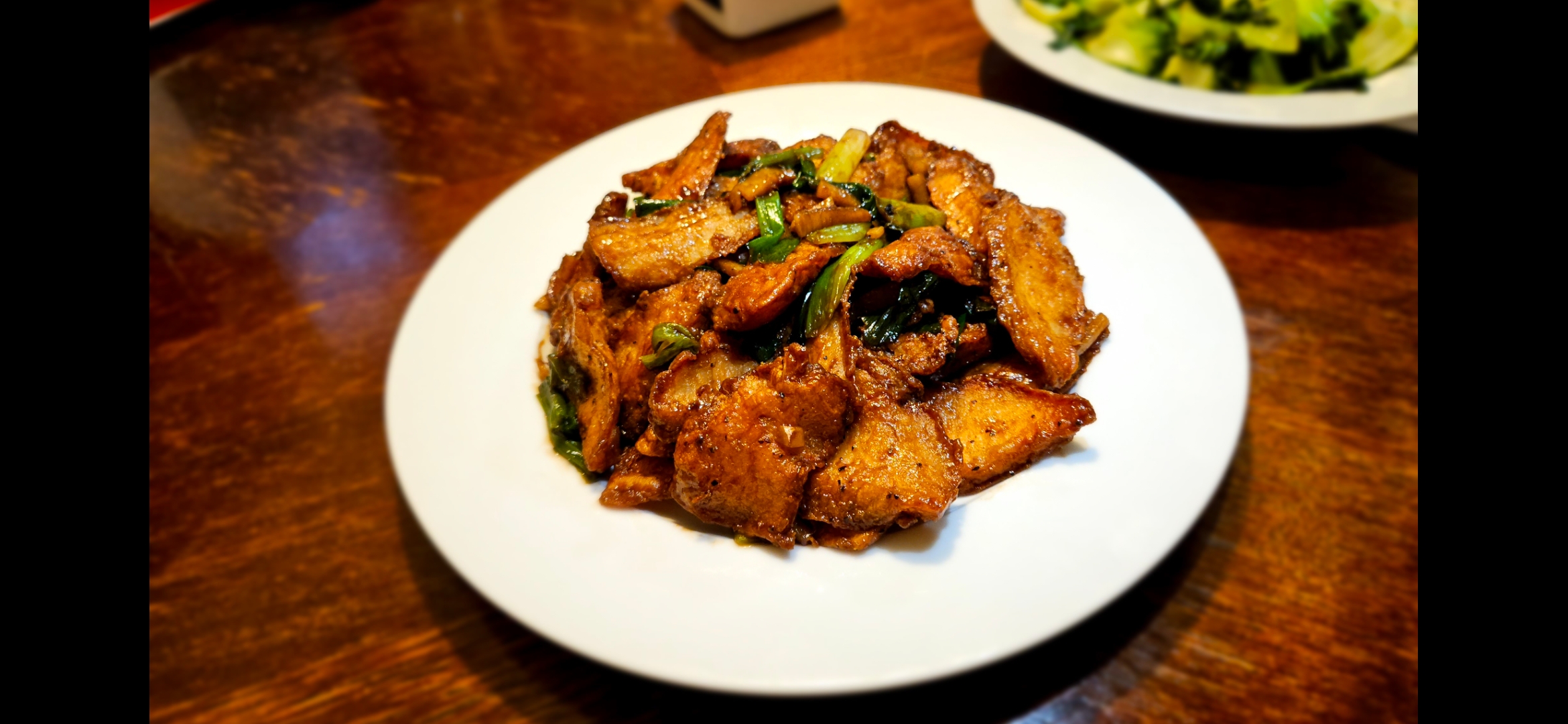葱姜鱼片 (ginger scallion fish fillets)
Fish fillets, with ginger and scallion

Ingredients
- Aromatics
- Ginger
- Scallions
- Sauces
- Oyster sauce
- Soy sauce
- Fillets from a white fish. Sea bass is one of the traditional ones, tilapia is also great and cheaper. You can ask GPT what are the most traditional fish to use.
- Salt/MSG/Sugar
- White pepper
- Black pepper
- Cornstarch/flour
- Shaoxing wine (for prepping the fish)
For the sauce, the ratio of soy sauce to oyster sauce is approximately 1 to 1. You could use a little more soy sauce than oyster sauce if you like, using something like 1.25 to 1, but it’s really up to you.
Cooking:
Prepping the Fish: slice the fish and put in a bowl. Add salt and shaoxing cooking wine. Let it sit for a bit. Rinse briefly afterwards and let dry. The purpose of this is to get rid of some of the fishy/gamey flavor.
Coating the Fish for Frying: after drying the fish, sprinkle generously with salt, white pepper, and black pepper. Cover the fish generously in a cornstarch/flour mix (roughly in a cornstarch:flour = 2:1 ratio), being sure to add some of the reasonings into the cornstarch/flour mix as well.
Aside on the flour/cornstarch ratio: flour, when fried, tends to add a crunchy, heavier texture. Think about how southern fried chicken is very crunchy and is a little heavy. Cornstarch, on the other hand, is more light and crispy. Potato starch is also a great choice and is crispy as well.
The point of adding both is that the cornstarch adds a light crispiness to your fish, which complements the delicate texture of the fish. In contrast, adding some flour helps by helping the mixture stick to the fish.
Frying the Fish: heat up oil in a pan (I was using non-stick, but maybe stainless steel is better). You can use the chopstick test to test when the oil is hot enough, i.e., when the chopstick starts bubbling with you put it in the oil. You want the oil to be quite hot, since the point of frying is to briefly fry the coating, solidfying it and adding some flavor. In particular, you do not want to fry the fish too long, since it dries out quickly (from personal experience, sadly). So you want hot oil, fry the fish and its coating quickly, and then take it out before it dries out.
Anyways, once the oil is hot enough, put the fish fillets in, and fry until it’s crispy on the outside. Sorry, I don’t really have a time guideline on how long this takes, perhaps just takes a little practice. Take the fish out and put it on a paper towel to drain excess oil.
Making the Sauce and Stir Frying: Slice ginger into thin slices, and slice scallion into small segments (preferably in a diagonal fashion, as it looks better). Separate the scallion whites from the greens. Heat up a wok at medium-low temperature until steaming. Add oil and then add in the aromatics. Fry until slightly browned and you can smell the flavors.
Mix the soy sauce/oyster sauce together with a little water, and add into the wok. Be careful here; soy sauce and oyster sauce burn very quickly, so you don’t want the temperature to be too high, and is also why you mix it with some water (this is why we’re using medium-low temperature). On the other hand, you do want the temprature to be high enough so that it caramelizes the soy sauce and oyster sauce a bit, so it can be a little bit of a balancing game.
What I like to do is to add the soy sauce/oyster sauce, have it fry for a second, then add some additional water quickly so that it caramelizes without giving it time to burn. After adding some additional water, let it cook briefly and add some cornstarch to thicken. Add suguar to taste (you can also add some salt/MSG, but soy sauce/oyster sauce should already have enough sodium/umami flavors by themselves).
When the sauce is finished, add in the fish fillets and the scallion greens, toss briefly, and then remove to serve.